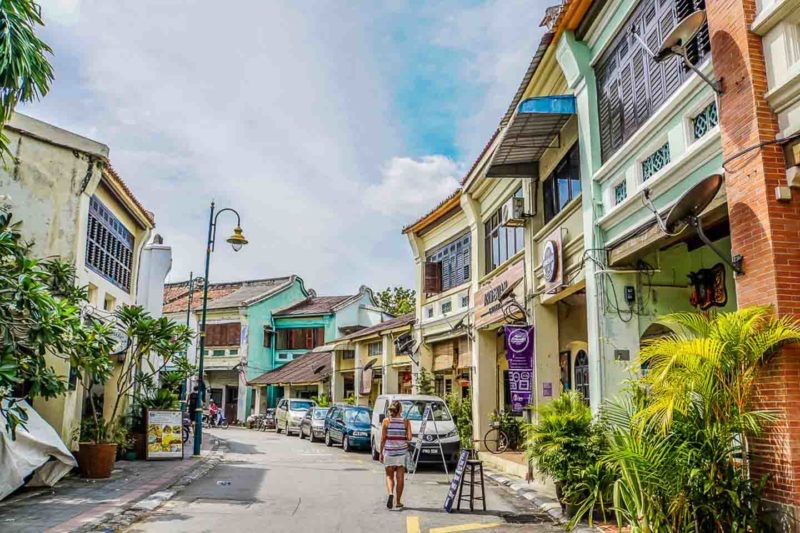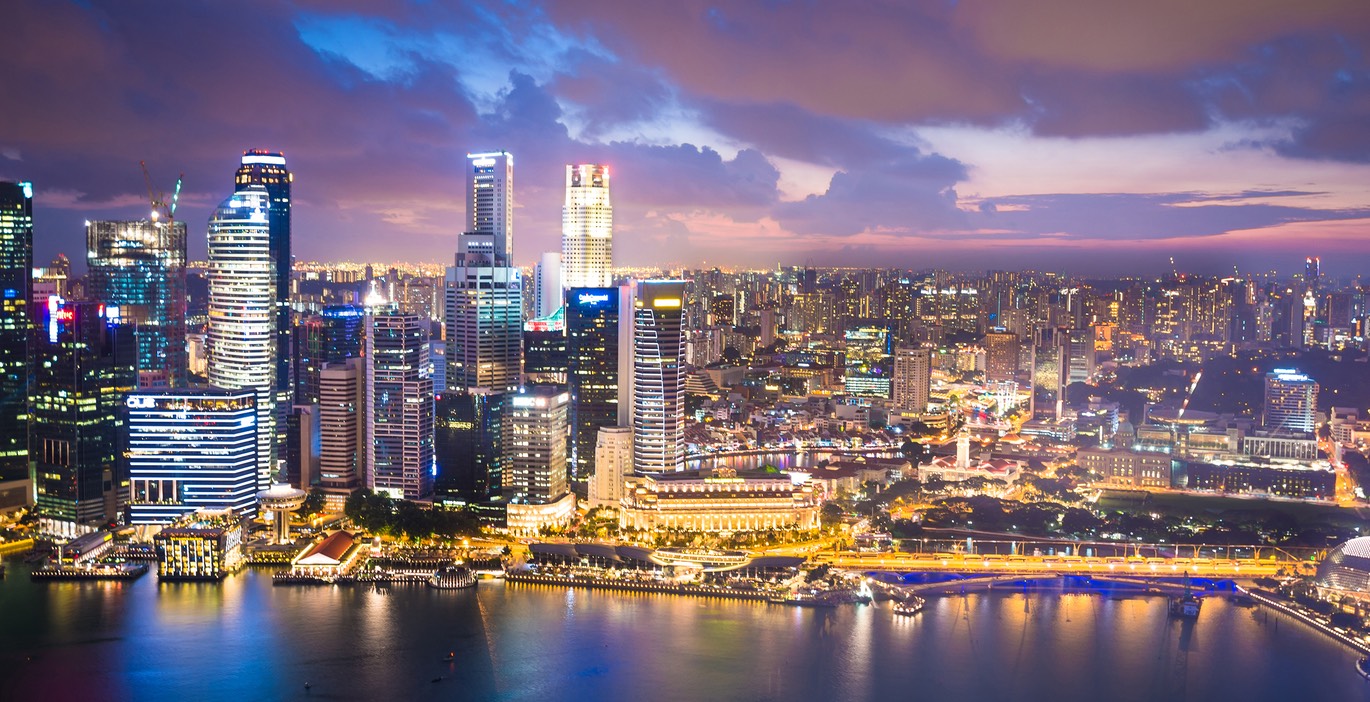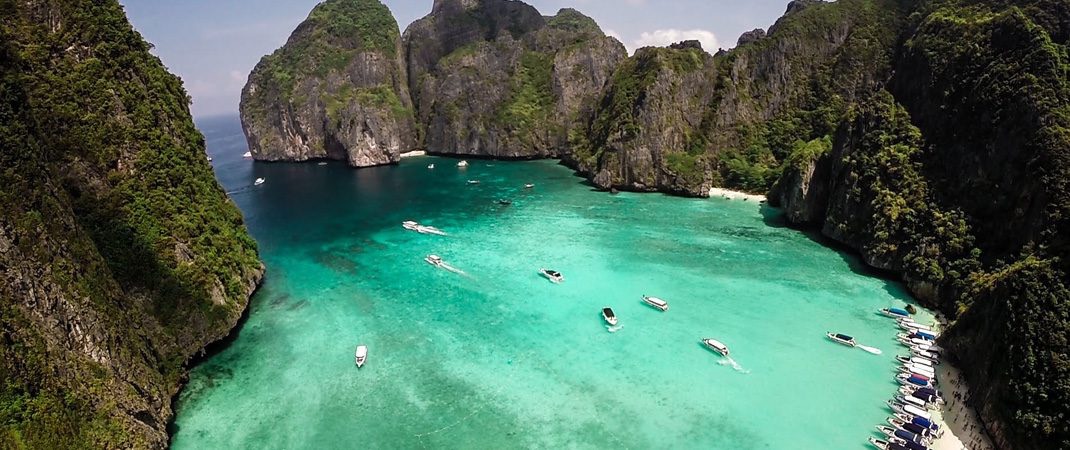Day VIII: Siem Riep, Cambodia
After one day at sea (during which I may or may not have sang All Star by Smash Mouth at karaoke night), we disembarked at the Singapore cruise terminal and rode a shuttle to Chengi Airport, where we boarded a Silk Air flight to our next destination: Siem Reap, Cambodia.
The next morning, we left our hotel early in the morning and began our tour of the ancient city of Angkor. Built by the Khmer Empire in the 12th and 13th centuries, the sprawling ruins include hundreds of Buddhist and Hindu temples. Of these, the most famous by far is Angkor Wat. The silhouette of this magnificent temple is depicted on the Cambodian flag.
Angkor Wat was built between in 1113 as a Hindu temple. The temple originally featured nine stepped towers, but only five remain standing today. The highest level of the temple was reserved exclusively for the Khmer king. The exterior corridors of the temple are enscribed with intricate bas-relief carvings depicting scenes from Hindu mythology.
Next, we visited the so-called “Smiling Face Temple”. Built by King Jayavarman VII, the most famous king of the Khmer Empire, it was originally built as a Buddhist temple but was later converted into a Hindu place of worship. The temple’s many towers are covered in sculptures of smiling faces, one facing in each direction.
Last, we visited the so-called “Tomb Raider Temple,” which resembles something out of an Indiana Jones movie. The temple is largely being held together by centuries-old trees. If the government were to emove the trees, what’s left of the temple would collapse - for that reason, the temple has been largely left in its overgrown state. Large portions of the temple have already collapsed.
The Angkor temples are beautiful, meticulously detailed, and in surprisingly good condition given their age and the unforgiving tropical climate. Though moisture has stained the ancient stone green in some places, and the Cambodian jungle has begun to reclaim some temples, the opulence and splendor of Angkor largely remains. Preservation efforts by the Cambodian government, world governments, and UNESCO will ensure that the temples of Angkor stand, in all their glory, for another millennium.
- Hayden M. Strong
Tomorrow: One last day in Singapore before we fly back to Philadelphia.
Day V: Phuket, Thailand
Today, we anchored in Phuket Bay and rode a smaller boat to shore, where we travelled to the marina to begin our boat tour of the Phi Phi Islands.
For this post, I intend to let the pictures we took here speak for themselves, adding captioning as required.
Tall limestone cliffs and jungle greenery characterize these tiny uninhabited islands.
Shockingly clear crystal-blue water.
Schools of tropical fish. Picture taken with a waterproof camera whilst snorkeling off the coast of the islands.
Part of the colorful coral reefs that surround the white sand island beaches.
A spiky sea urchin.
A huge school of tiny, electric blue fish. The color isn’t very evident in this picture, but in person all the fish were vibrantly patterned.
More fish. Huge groups of coloful green, yellow and blue fish congregated underneath our boat while we were docked.
Viking Cave, so named because cave paintings that resembled a Viking ship were discovered here some time ago.
White fish blend into the pure-white sand just a few feet from the beach.
The Phi Phi Islands were some of the most spectacular places I have ever seen. The warm, impossibly clear water, colorful fish and coral, and beautiful deserted islands combine to create a serene, otherworldly landscape.
Tomorrow is a sea day as the Voyager of the Seas returns to Singapore. Soon after, we will depart for Siem Reap, Cambodia, where we will visit Angkor Wat.
- Hayden M. Strong
Fish photobomb!
Day IV: Langkawi, Malaysia
Today, we got off the ship and were driven by truck (with Dad in the back) to the beach for an island-hopping tour via Jet Ski.
The streets of Langkawi, an island town with a vague Hawaii/Caribbean feel. Bicycles and mopeds far outnumber cars, and most of the buildings are simple structures, some with traditional straw roofs. One brand-new ultra-modern W Hotel looms over the tiny town.
The small, uninhabited islands surrounding Langkawi look like something out of Avatar, with brilliant green trees and weatherbeaten limestone cliffs.
The first place we visited on our tour was Dayang Bunting, an island with a freshwater lake in the center.
As we trekked through the jungle, Violet got slapped in the face by a wild monkey.
Fortunately, none involved were injured.
We then visited a saltwater cove perfect for swimming:
The islands’ limestone cliffs have been attacked by the pounding surf for centuries, forming outcroppings and caves.
We then voyaged to a cove frequented by nesting eagles.
These birds of prey gave Langkawi its name; Lang Kawi means Eagle Rock in Malay. They prey on the many tropical fish that live in these crystal-blue waters.
This pier was decimated by a tsunami several years ago and now resembles something operated by the DHARMA Initiative.
Next, we drove across the bay for a photo op with our ship:
Here our guide attempted to demonstrate a trick and ended up violently throwing me from the back of a Jet Ski going 37 MPH. Fortunately everybody was fine!
Langkawi may be the most incredible tropical locale I have ever visited. It is sometimes difficult to believe that places like this actually exist. The splendor and sense of serenity, in my opinion, are unmatched by any island in the West.
Tomorrow: Phuket, Thailand, for a boat trip to the Phi Phi Islands for snorkeling in the famously crystal-clear waters.
- Hayden M. Strong
Day III: Georgetown, Penang, Malaysia
Today, our ship docked in Penang, an island off the coast of Malaysia.
We met our guide, Maxwell, outside the cruise terminal. Our first stop was Penang’s largest Buddhist temple, a monastery set into the hills surrounding the city.
The entire complex from a distance.
The intricate facade of one of the structures. Built by a visiting Chinese monk, portions of the monastery date back to 1890.
Inside the complex’s largest temple.
Financial records from the monastery’s construction, engraved into a building’s stone walls.
The view from the top of a seven-story pagoda. The tall circular building is KOMTAR Tower, the tallest building in Penang.
As we were driving back to the historic George Town district, which is comprised wholly of British colonial buildings and is a certified UNESCO World Heritage Site, we passed by a group of wild monkeys:
Walking the streets of George Town:
This is Chew Jetty, built by Chinese merchants in British colonial times to dodge taxes on land use. Today it’s used by local fishermen, who set up crab traps underneath the wooden structures.
Penang is an interesting city. It is rapidly being adopted by Malaysia’s nouveau riche, hence the increasing proliferation of modern high-rise buildings and sprawling mansions that coexist with colonial-era shops and homes. In Penang, shiny new German luxury sedans share the road with old trucks, motor scooters, and tiny city cars made by Malaysian companies like Proton and Perodua. This Malaysian beach town is in the middle of its Westernization and reinvention, as the old slowly cedes its position to the new.
Tomorrow: the tiny island town of Langkaui, Malaysia.
Day II: From Singapore to Seafaring
Today, we embarked on another tour of Singapore, this time highlighting the more traditional, culutural side of this gleaming modern metropolis.
We began today’s journey at the Singapore Botanical Gardens, specifically the sprawling complex’s orchid garden.
Walking through the colorful gardens in the early morning mist was beautiful and almost surreal.
Next, we departed for Kampang Glam, the city’s traditional Malay quarter. The name translates to “Eucalyptus Village”, named for the many eucalyptus trees that dot the area. Most of the buildings date back to the nineteenth century and are protected historical landmarks. The district is nestled in the heart of SIngapore’s central business district, surrounded by towering residential and commerical high-rises.
This mosque, Masjid Sultan, is the largest and most ornate mosque in Singapore. Built in 1824, the building’s designer cleverly made use of limited resources when constructing the building. Some of the building’s trim is made from empty soy sauce bottles!
Here, the unique juxtaposition of crowded, narrow streets and modern skyscrapers.
The old Malay quarter is surrounded by new buildings, including Duo, a superluxury condominium complex designed to look like a honeycomb:
and this office building, which our guide compared to a building in Gotham City! It’s a beautiful and ridiculously ornate Art Deco-revival structure. Postmodernist architecture at its finest.
Next was Singapore’s Little India, a neighborhood of narrow, winding streets and colorful buildings.
Merchants and vendors set up shop in the street, selling everything from food to clothing to carpets.
Next was Chinatown, where we visited a magnificent Buddhist temple. Built entirely with private donations, the building houses an archaelogical relic which is claimed to be one of Buddha’s teeth.
We stopped at one of Singapore’s hawker centers, or food markets, where we tried a traditional Malay lime drink.
As we made our way to the port, we passed many of Singapore’s newest and most innovative buildings:
The Oasia Hotel, a truly “green” building. The facade is covered in plants which absorb heat and sunlight, helping to cool the building and reducing energy usage.
The Pinnacle, Singapore’s premier public housing project. The complex of seven towers features shops, restaurants, swimming pools, and a rooftop jogging track. Despite its amenities and premier, bayfront location, government subsidized pricing makes these apartments accessible to the masses.
We boarded the Voyager of the Seas in the early afternoon and set sail at around 5:00, en route to George Town, Penang though the Strait of Malacca. George Town is a beautiful old colonial city on the island of Penang, said to have the best food in all of Malaysia.
- Hayden M. Strong
Day I: Arrival in Singapore
Twenty-three hours airborne.
After an exhaustingly long day of travelling, our plane, United Flight No. 1, touched down in Singapore early Sunday morning, a full day and a half after we departed Philadelphia on Friday afternoon.
After we arrived at our hotel, the Four Seasons Singapore, we ate a quick breakfast and promptly went to sleep. We ended up sleeping far longer than we’d anticipated and awoke just in time for the day’s scheduled activity, a brief tour of the city of Singapore.
Singapore is a densely populated city-state that gained independence from Great Britain in the early 1960s. Since that time, it has established itself as a major player in the finance, shipping, and petroleum industries, helped by low corporate taxes and an extremely livable urban environment. Singapore boasts the world’s second busiest port and the world’s most critically acclaimed airport, and is widely regarded as the most expensive city on Earth. The official language of Singapore is Malay, but English is by far the most widely spoken and used language within the tiny nation’s borders.
Most of the city’s residents live in high-rise buildings. The astronomical cost of rent in the city is partially alleviated by government housing subsidies. Here, a collection of residential buildings:
The city’s wealthy residents live in privately owned condominium buildings, where prices can range into the tens of millions of American dollars. Even more expensive are the city’s few low-rise homes with land, which can exceed $100 million in price. Here, a complex of ultra-luxury condos.
The Merlion is the unofficial symbol of Singapore, representing the fusion between the old and the new. The most famous Merlion statue is located on Marina Bay, but there are a total of five such statues to be found throughout the city.
More shots of the cityscape, almost entirely comprised of new, high-tech structures.
Viewed from the city’s second-highest point:
The city’s central business district, which is almost entirely made up of international and local banks. It is often referred to as the “Wall Street of Southeast Asia."
The Marina Bay Sands hotel is Singapore’s most famous building. It is the most expensive casino ever built and features a full shopping mall with brands such as Tiffany and Louis Vuitton, movie theatres, a convention centre, and three hotel towers supporting the Skypark, which houses a restaurant, bar, swimming pool, and overlook. Also on the property is the flower-shaped ArtScience Museum.
At the sprawling Gardens by the Bay, engineers have constructed a grove of so-called “supertrees.” These are sustainable, self-sufficient “green” structures which generate their own electricity, collect rainwater, and absorb carbon dioxide. Some include walkways and viewing platforms, and the tallest even has a restaraunt!
Lastly, this 1,000-foot-long dam, the Singapore Barrage, separates Marina Bay from the Pacific Ocean. On the left side of the bridge is the freshwater bay, dotted with tourist boats and lined with skyscrapers. On the right is Singapore Harbor, filled with huge container ships and oil tankers docking at the city’s busy port.
Singapore is a sleek, efficient city, a testament to the incredible pace of modern innovation and a living, breathing exhibition of the capabilities of engineering and technology. In just fifty-three years, the tiny nation has gone from barren British colony to a commercial and financial powerhouse.
Tomorrow, we take a more cultural look at Singapore, visiting the city’s smaller neighborhoods before boarding our ship, which will take us to Georgetown and Langkawi, in Malaysia, as well as Phuket, Thailand.
- Hayden M. Strong
Fun Fact: Singapore’s passport is the most widely accepted in the world, granting entry to 182 nations without a visa.
Hayden’s Page - Tenth Anniversary Edition
It’s been ten years since I wrote the very first version of Hayden’s Page. Since then, I’ve visited and catalogued our travels around Europe and Northwest Asia, featuring exotic locales such as Greece, Turkey, Sweden, Estonia, and Israel. All accompanied by interesting facts, personal anecdotes, and stunning, high-resolution photographs.
Now, ten years after it all started, Hayden’s Page is back. And this time, I’ll be traveling to an entirely new set of locations.
M a l a y s i a .

S i n g a p o r e .

T h a i l a n d .

C a m b o d i a .
D e p a r t i n g J u n e 2 2 2 0 1 8